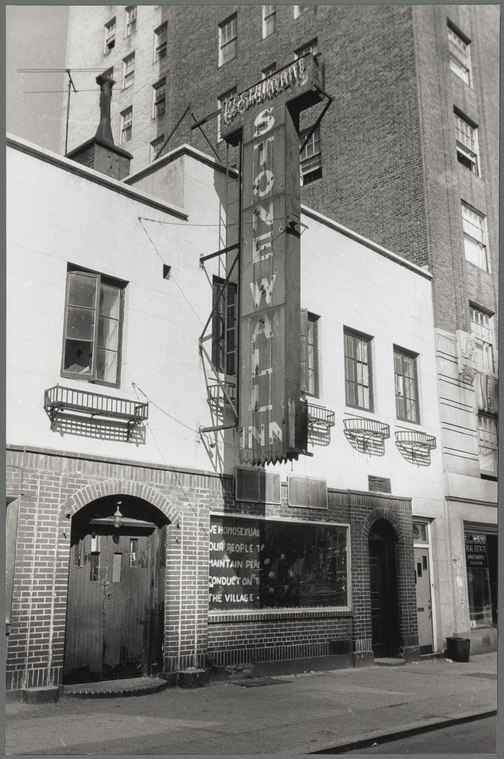The Stonewall Riots

The gaining of rights and equality for minority groups has been long and difficult, with many having to fight the same battles for decades, and still not seeing change, or seeing their rights be gained before being taken away. One of the events that sparked the fight for LGBTQ+ rights was the Stonewall Riots. While there have been other such fights for the LGBTQ+ community prior to Stonewall, Stonewall was the first to create more population level acknowledgement through the number of people who were involved, and the length of the riots (Armstrong & Crage, 2006). The Stonewall Riots are what put the fight for LGBTQ+ rights on the map, but unfortunately not many individuals outside of the LGBTQ+ community know what the Stonewall Riots are, or how they eventually led to June being Pride Month (Armstrong & Crage, 2006). The Stonewall Riots, due to the lack of common knowledge about them, are a prime example of erased minority history, and the battles and people that worked to make it possible for all people within the LGBTQ+ community to feel seen and respected today.
The Stonewall Inn was remodeled many times, but when it was re-opened in 1967, it was a bottle club, where patrons were asked to bring their own alcohol to than have it served to them by wait staff, though this was actually a technique used to get around the liquor laws at the time (Stein, 2019). The Stonewall Inn was known for only letting in people who fell into the LGBTQ+ crowd: gay, transgender, gender-queer, or queer questioning individuals (Stein, 2019). The Stonewall Inn was known for being 'seedy', and was raided by police about once a month due to its selling of alcohol without a license, its mafia ties, and the fact that many staff and patrons were on drugs (Armstrong & Crage, 2006).
The raid of the Stonewall Inn, and the beginnings of the Stonewall Riots, occurred in the early morning hours of June 28th, 1969 (Stein, 2019). The purpose of the raid was to seize alcohol and arrest Inn staff. As the police made arrests of both staff and patrons, a crowd of non-arrested patrons began to form outside the Inn (Armstrong & Crage, 2006). This is where this raid, and subsequent riot, deviated from previous raids of LGBTQ+ spaces. Usually, those who were able to escape without being arrested would quickly get away from the scene, but not this time, as a crowd of patrons, residents, and passers-by gathered (Armstrong & Crage, 2006). As more Inn patrons were arrested, the crowd grew angry, and this is where the riot began. The rioters fought back, and eventually forced the police into the Inn, where they threw items such as bricks, rocks, and cans and bottles at the building (Stein, 2019). Their attacks on the building continued until police reinforcements arrived. Even after these cops, with training in riot control, arrived, the riot continued for several hours, with thousands of people rioting (Armstrong & Crage, 2006). After the end of the riot that occurred in the early morning hours of Saturday, June 28th, a second riot occurred the night of June 28th and into the morning of Sunday, June 29th, with a major protest occurring the following Wednesday (Stein, 2019). The Stonewall Riots, unlike any previous LGBTQ+ movements, sparked discussion of queer rights, larger media coverage, changes in laws and legislations, and the eventual coining of the phrase "The First Pride Was a Riot" (Housman, 2022).
Collections Detailing the Stonewall Riots
Stonewall Uprising Interviews Collection, American Archive of Public Broadcasting, Library of Congress, Culpeper, Virginia.
The Stonewall Uprising Interviews Collections consists of 48 interviews conducted for a documentary with the same name. These interviews discuss the Stonewall Riots, including the perspectives of some who participated in the riots. They also discuss the social attitude towards queer people before and after the riots, what the Stonewall Riots did for the LGBTQ+ community, and the first pride parade.
Stonewall 50 Commemorative Collection, Columbia University Libraries, New York, New York.
The Stonewall 50 Commemoration Collection is a digital collection assembled by Columbia University Libraries. This collection links to various pieces of web content that were created as part of the commemoration of the 50th anniversary of the Stonewall Riots. This web content includes interviews with original Stonewall Riot participants, historical essays, and exhibitions put together to help celebrate the event.
Marty Robinson Collection (Collection #27), The Lesbian, Gay, Bisexual, & Transgender Community Center, New York, New York.
The Marty Robinson Collection consists of materials created and assembled by Marty Robinson, a queer activist who emerged after the Stonewall Riot. Marty Robinson was a founding member of both the Gay Activists Alliance and The Lavender Hill Mob, so much of his collection relates to these groups. The collection includes materials associated with both of these groups, as well as other queer liberation groups, and includes materials such as papers, correspondence, and physical artifacts.